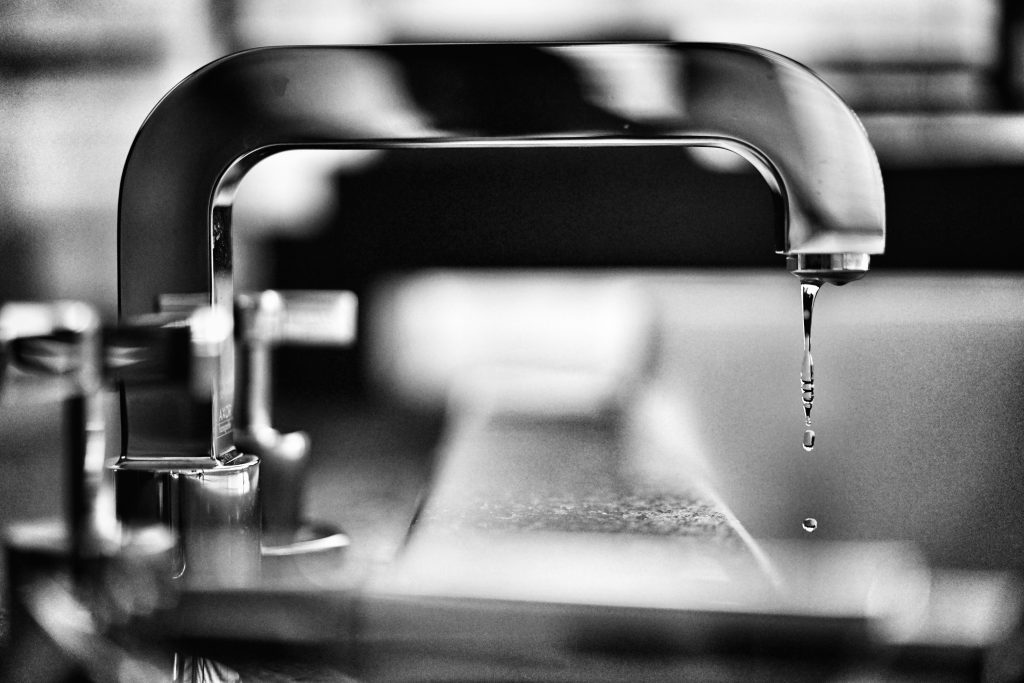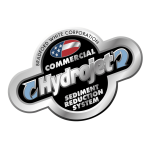A broken faucet, a leaking pipe, and a clogged drain can make you groan in frustration. These frustrations can be mitigated by a plumbing checklist for your home.
This complete plumbing checklist for home maintenance is the best way to prevent falling into the myriad of frustrating residential plumbing problems that exist.
If you ignore them, they can snowball into catastrophic situations that’ll make living in your home difficult, if not impossible. But annual inspections and regular maintenance will fix problems before they happen.
Let’s dive into the checklist for keeping your home’s plumbing in perfect condition all season.
The Complete Plumbing Checklist to Add to Your Home Maintenance Routine
The bathroom, kitchen, septic, and sewer systems are the mainstream plumbing areas inside the home. However, some appliances and fixtures around the house also need regular inspection and maintenance.
That includes your water heater system down your hose spigots outside the house. They all need equal attention to remain operational and in great condition.
Here is everything that you must put on the checklist for plumbing needs.
At a glance:
4. Check the water heater system
5. Inspect the septic and sewer system
6. Check for pipe corrosion and scale build-up
7. Examine other plumbing fixtures
Let’s dive in…
1. Check for leaks
Water leaks are a major problem that could lead to an excessive water bill. It contributes to the wastage of up to 1 trillion gallons of water in U.S. homes every year.
So, it makes sense that the first thing to do is look for any pipe leaks. The main areas of interest for water leakage are the kitchen, bathroom, water heater system, and laundry. If you suspect a water leak, include outside premises of the house to ensure that you don’t ignore any area.
Check the toilets, faucets, showerheads, bathtubs, and under-sink areas in the bathrooms. The areas to inspect in your kitchen include faucets, sprayers, under the sink, appliances, etc. Look for any water dripping, pooling water under pipes, or rusty pipe joints and edges. Also check your laundry room sinks, clothes washer, and water heater system.
Sometimes, the water leak can also come from problems outside the house. Your spigot hose and underground irrigation system can be the real culprits, resulting in gallons of water loss and damage to the walls of your house.
2. Prevent and clear clogs
Checking clogged pipes and drains is necessary to save yourself from impending problems. The signs to detect clogs are corrosion, pooling water, slow water drainage, etc. If ignored, the situation can get worse, resulting in sewage backup.
The most common causes of clogging include hair, soap, food waste, dirt, mineral build-up, small objects, toilet paper build-up, tree roots, etc. All of which work in different places inside and outside your house.
For bathrooms, hair and toilet paper are infamous culprits. The first thing you should do is make necessary arrangements to catch greasy hair before they go down the drain, such as frequent cleaning of the shower grate.
If the clogs have already occurred, you can fix and clean them.
Food waste is the main reason for clogging kitchen drains. And your underground irrigation system can get clogged by tree roots. This can be a complicated task to fix. You should probably call a professional for this.
Dirty and blocked filters in your water heater system, refrigerator, and HVAC unit can stop the flow of water. Therefore, timely inspection, detection, and replacement are necessary to keep your appliances functional.
3. Inspect water pressure
Conduct a water pressure test during your regular home maintenance. Water pressure inspection is also a necessary part of the plumbing checklist that ensures your water pressure is not too low or too high.
Low water pressure is annoying because it slows down basic tasks. However, high water pressure puts your plumbing system at an enormous risk whenever you use a tap.
The ideal water pressure is around 60 pounds per square inch (psi). However, a water pressure between 40 and 80 psi is acceptable. If the water pressures go below 40 psi, this is when you need to take notice and take corrective measures.
All you need to do for checking water pressure is purchase a hose bib scale. It can be easily bought from any plumbing store. Attach it to an outside faucet and open the valve on the plumbing line. Your bib scale will give a pressure reading. And you can enjoy a warm shower if the pressure is in the ideal range. Otherwise, it’s time to fix it.
4. Check the water heater system
Although your water heater is out of sight, probably in your basement, it still needs your attention from time to time.
Check for any leakages in the cold water inlet and hot water exit pipes. A faulty temperature and pressure relief valve can also be a reason for the leakage on the water heater base.
Besides, you should periodically clean the water heater system to remove the sediment accumulation at the tank bottom. Flushing out of the water heater can be done every few years.
A professional’s seasonal or annual plumbing maintenance of the burner unit is recommended for the gas water heater owners to keep your heater running in perfect condition.
5. Inspect the septic and sewer system
You cannot afford to ignore your septic and sewer system. Any plumbing problem in the kitchen, bathroom, outside house, and water heater system is frustrating. But if you have a plumbing problem in your septic system and sewer line, it also puts you at a health risk.
To maintain your septic and sewer system here is what you should do:
- If you’re using a septic tank system, pump out the tank after it’s full
- The drainage field system owners should ensure that no clogging or drain-blocking material should be used; you need to know the materials that can’t be drained easily
- Food, bleach-based cleaners, etc., are items you don’t want to flush into the septic system
- Regular inspection and maintenance by professionals are required for your sewer main
- Any tree roots in the sewer line can become a big problem in the future; an annual inspection solves the problems from escalating to a blocked drainage
- All sinks and tubs should be emptied simultaneously to inspect the efficiency of the sewer line; in case the drainage takes longer than normal, or there’s drain backup, it’s time to call professional help
6. Check for pipe corrosion and scale build-up
Pipe corrosion, if unattended to, can sometimes result in the replacement of the whole pipeline, which can be a very costly deal. Therefore, you must add inspection of pipes for corrosion and scale build-up to your complete plumbing checklist.
The external pipes can easily be inspected for corrosion. But the pipes buried in the ground are the real deal. You might have to dig down to see if the pipes are doing well. There are several ways you can detect corroded pipes.
The pipe leakage is the first sign indicating that there might be corrosion going on. Look for blue stains to locate any leakage caused by corroded pipes. Also, check all the external and visible pipes for rust or corrosion. Your toilet tank is the best way to check the rusting if you’re using galvanized pipes.
If you have already called plumbing professionals to fix an ongoing problem, it’s the best time to check the pipes for any rust or corrosion. Corrosion can also be checked by inspecting your water for copper. If you find abnormal copper levels in the water, it is a sign of corrosion unless you have corrosion-proof pipes at your home.
7. Examine other plumbing fixtures
The complete plumbing checklist doesn’t in checking for corrosion. Besides the main plumbing maintenance, you have other appliances to take care of. Your plumbing checklist for periodic inspections and maintenance should also cover:
The washing machine
The water hoses of the washing machines should be inspected and replaced if needed. Because rubber hoses can wear off, which results in bulged hoses. You can do DIY plumbing to replace the rubber hoses.
Another concern is the water damage caused by ignoring and not inspecting the hoses periodically. Also, check the hot and cold water valves connected to washing machines. If the valves are lost and do not stop the complete flow of water once shut off, it’s time to replace them or call a professional plumber.
Caulk seals
You might have fixed minor leakages using caulk seals. Although it’s not called plumbing, we can easily call it DIY plumbing. If you had fixed leakages around showers, bathtubs, sinks, etc., also add caulk seal inspection to your plumbing checklist.
If any caulk seal is not intact, it can damage your walls and floors by continuous water seepage inside the house structure. Therefore, make sure to check caulk seals and fix the old caulks.
Irrigation system
When the watering season is coming, you need to add an item to your plumbing maintenance checklist. It’s the inspection of your lawn sprinkler systems. Check that spray heads are operational, pipes are not ruptured, and everything is perfect. At the end of the season, ensure that you winterize and drain the last drop of the water to avoid freezing or pipe ruptures.
Also on our blog: Learn how to prevent your pipes from freezing during winter.
Do You Need Professional Plumbing Inspectors to Go Through an In-depth Checklist for You?
When you do plumbing maintenance yourself, you’ll identify hidden problems and with some DIY skills, fix the minor ones. But there are a lot of technical aspects that only the seasoned experts can understand during an inspection.
Therefore, after completing the inspection of your plumbing system according to this complete plumbing maintenance checklist, call a professional plumbing company in Missoula to get everything back to tip-top condition.
At Plumb-Tech Plumbing and Heating, we have a team of professionals with our own in-depth, more technical plumbing checklist. All you need to do is give us a call and we’ll be right there to bring you total plumbing comfort.





